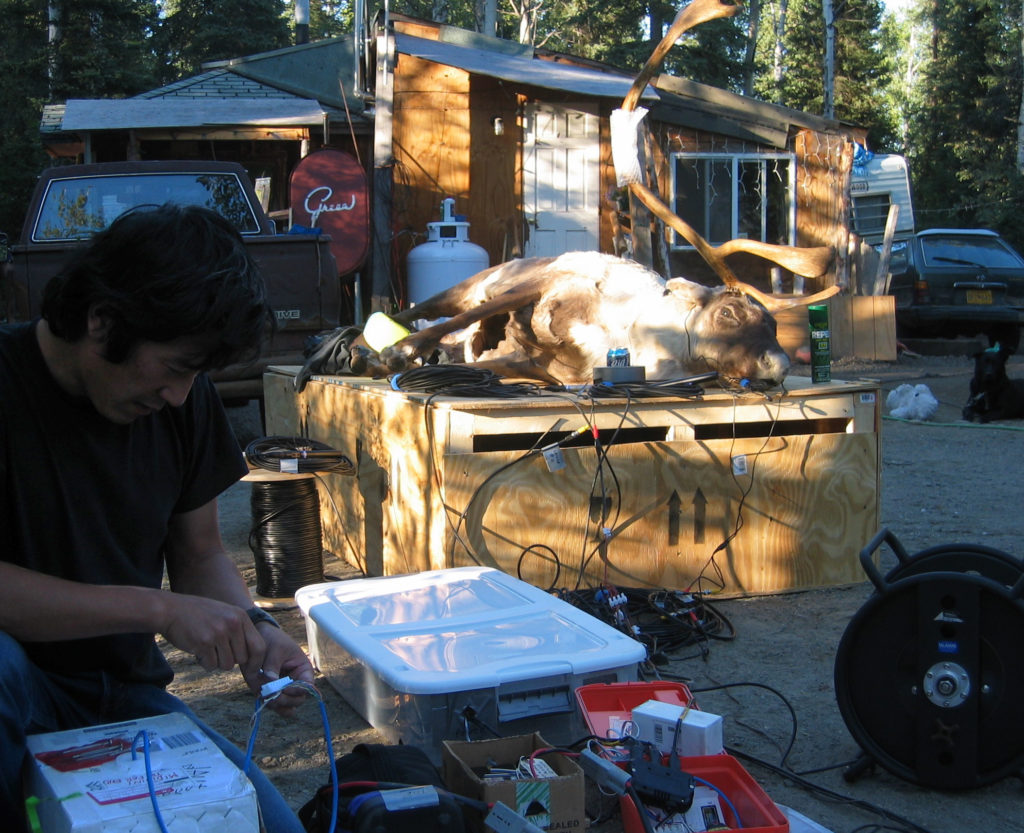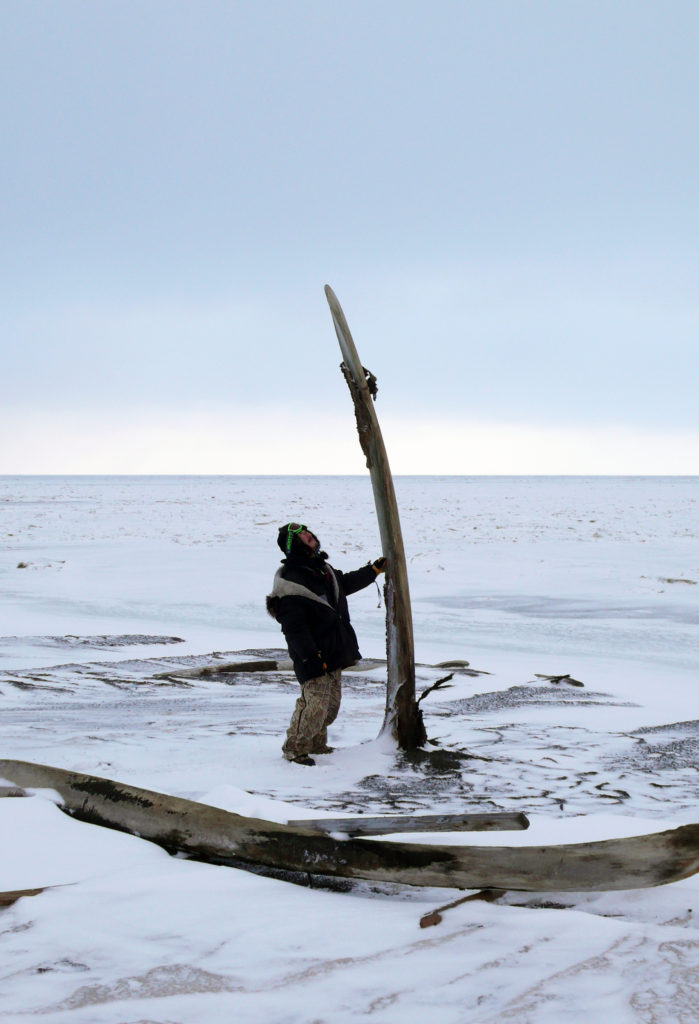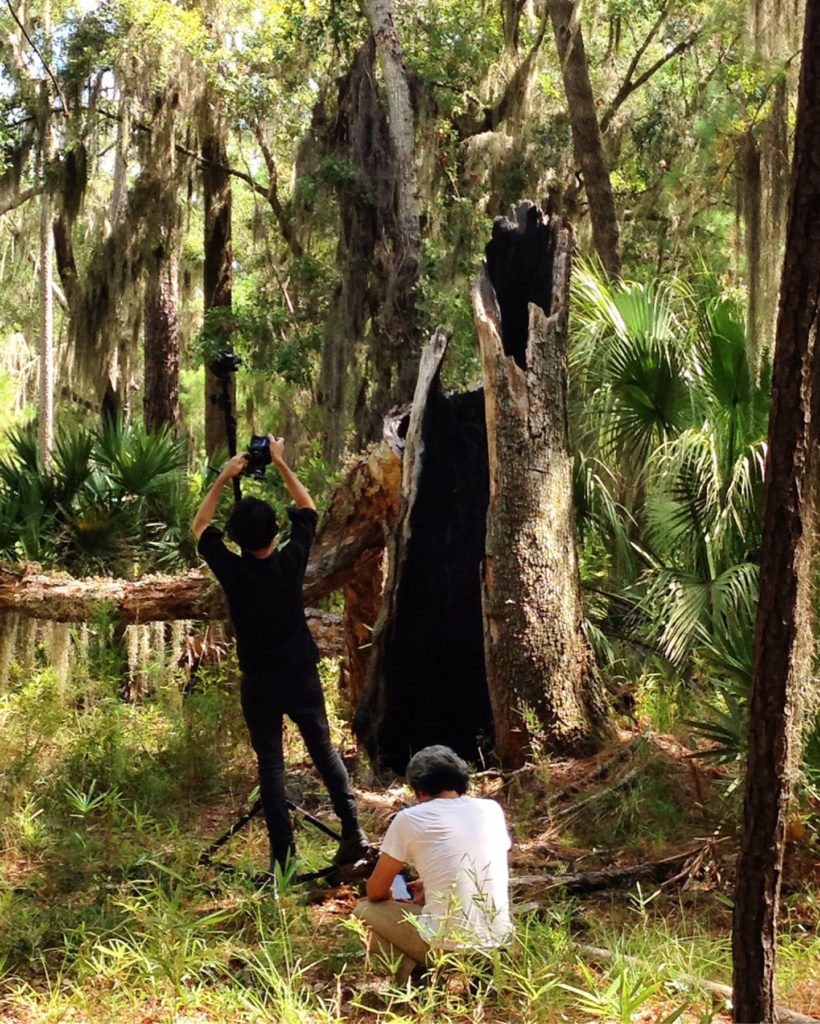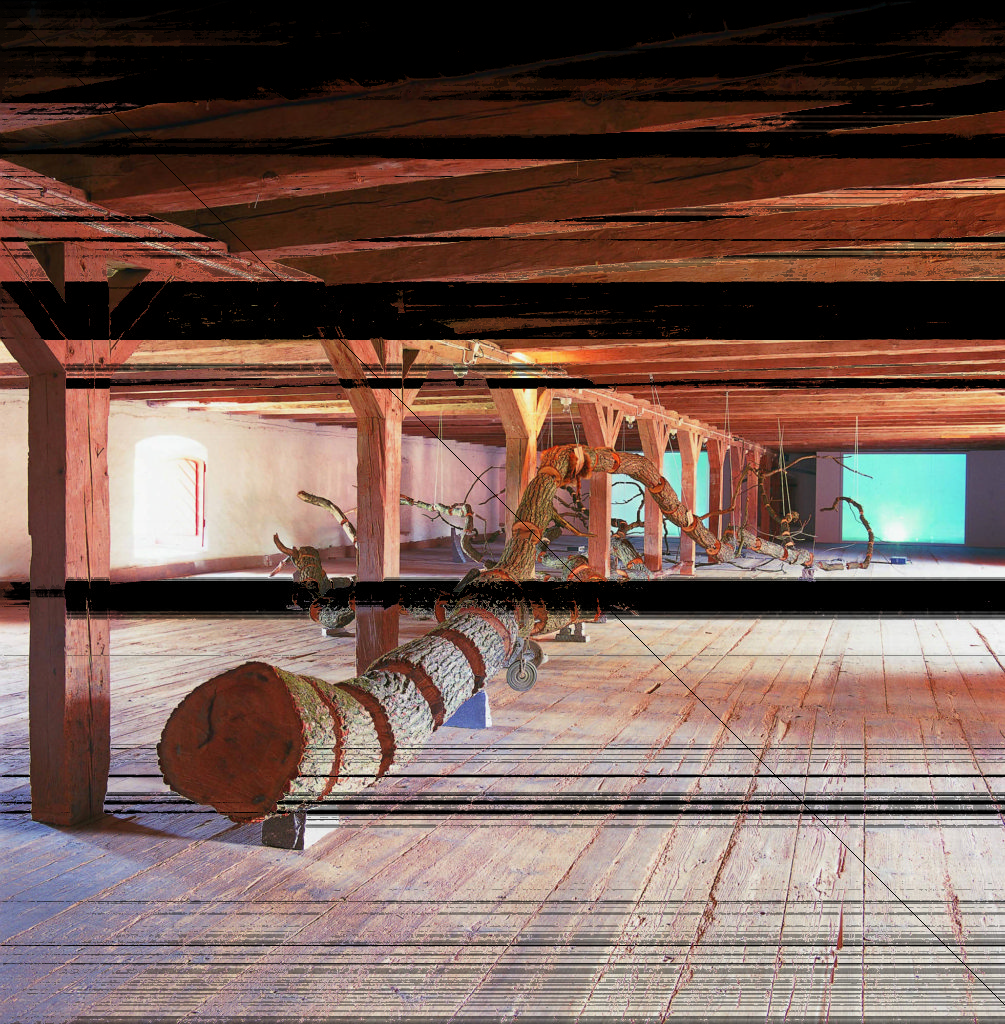2018.12.05
[12月17日(月)19:00~20:30※要申込]GLOBAL ART TALK 014 マイケル・ジュー「塩に変わる汗:境界域で自然を減速させる」開催のお知らせ
来る12月17日(月)、東山アーティスツ・プレイスメント・サービス(HAPS)との共催による世界的なトップ・クリエイターを招聘したトークイベント「GLOBAL ART TALK」の第14回を開催します。
今回のグローバル・アート・トークは、アーティストのマイケル・ジュー氏をお招きして、京都造形芸術大学大学院教授、森美術館副館長兼チーフ・キュレーターの片岡真実氏との対談を開催致します。
プロセスのリズムは、どこで減速し、そこに組み込まれたアートを可視化するのだろうか。バラバラになった物事は、見慣れているけれども新しいやり方によって、どこで再形成するのだろうか。ローカル、グローバル、トランスナショナル/トランスカルチュラルな文脈において、アーティストがそれに取り組む戦略や方法は何だろうか。これらは20年にわたるリサーチ志向型芸術実践の中で、ジュー氏が対峙し続けてきた幾つかの問いです。その実践は、彼が拠点を置くニューヨークからペンシルバニアの炭坑、アラスカの油田そしてUAEのシャルージャ砂漠にある化石層など、境界域にある不確定な場所で繰り広げられてきました。今回のトークでは、ジュー氏の芸術実践の根幹を成すリサーチの現場、微気候、文化そしてプロセスについてお話をいただきます。その中で、それらの変容を生み出してきた人々、場所そして文脈を紹介するとともに、リサーチが強固なものとなり、それが芸術作品となっていく数々の事例と経路を理解する手がかりを提示します。
—–
GLOBAL ART TALK 014 マイケル・ジュー「塩に変わる汗:境界域で自然を減速させる」
京都造形芸術大学HP イベント情報ページはこちら
https://www.kyoto-art.ac.jp/events/1925
—–
6月11日にアーティスト島袋道浩氏を招聘して開催した「GLOBAL ART TALK 010」のようすはこちらをご覧ください。
—–
島袋道浩 -アーティストとして生きることとは[GLOBAL ART TALK レポート](京都造形芸術大学Webマガジン 瓜生通信)
https://uryu-tsushin.kyoto-art.ac.jp/detail/420
—–
片岡真実教授がディレクターを務める「京都造形芸術大学大学院グローバル・ゼミ」についてはこちらをご参照ください。
https://www.kyoto-art.ac.jp/graduate/about/global_seminar/
—–
■概要
「アートがある事象に埋め込まれていく過程をあらわすリズムは、どこで十分に減速するのだろうか。バラバラになった物事は、見慣れているけれども新しいやり方によって、どこで再形成を果たすのだろうか。ローカル、グローバル、トランスナショナル、トランスカルチュラルな文脈において、アーティストがそれを促進する戦略や方法は何だろうか。これらは20年にわたるリサーチ志向型芸術実践の中で、私が対峙し続けてきた幾つかの問いです。その実践は、私が拠点を置くニューヨークからペンシルバニアの炭坑、アラスカの油田そしてUAEのシャルージャ砂漠にある化石層など、(物質が変容していくような)境界域にある不確定な場所で繰り広げられてきました。今回のトークでは、私の芸術実践の根幹を成すリサーチの現場、微気象、文化そしてプロセスについてお話します。その中で、それらの変容を生み出してきた人々、場所そして文脈を紹介するとともに、リサーチが強固なものとなり、それが芸術作品となっていく数々の事例と経路を理解する手がかりを提示します。」(マイケル・ジュー)
■マイケル・ジュー氏略歴
1966年ニューヨークのイサカ生まれ。セントルイスのワシントン大学とイエール大学芸術学部で美術を学ぶ。1991年からニューヨークを拠点として活動。それ以降、精力的に個展やグループ展、美術館等での展覧会を開催。メニル・コレクション、サーペンタイン・ギャラリー、ホイットニー美術館、ロダンギャラリー(サムソン財団)、世界文化の家、マサチューセッツ工科大学リスト・ヴィジュアル・アーツ・センター、フリーア・ギャラリー/サックラン・ギャラリー(スミソニアン美術館)等。作品を通して、アイデンティティや人間のコンディションに関わる本質的な問い、例えば「私たちは何からできているのか」「私たちはまわりの環境とどう関連しているのか」「私たちは自然の一部なのか、それとも自然とは切り離された存在なのか」、に取り組んでいる。自然および文化と物質を接合あるいは対立させ続けながら、近年では朝鮮半島における軍事境界線にある非武装地帯のような、地政学的に緊張関係にある場所によって、自然はどのように形づくられるのかを探求している。
■開催概要
日時:2018年12月17日(月) 19:00-20:30
会場:京都造形芸術大学 人間館 NA102教室
https://www.kyoto-art.ac.jp/info/about/access/
料金:無料(要申込み)
定員:100名
※英日逐次通訳あり
主催:京都造形芸術大学大学院、東山 アーティスツ・プレイスメント・サービス(HAPS)
■申込み・お問合せ
申込み・問い合わせ先:(GLOBAL_ARTTALK@office.kyoto-art.ac.jp)
*お申込みの際には、①氏名、②人数、③連絡先電話番号あるいはメールアドレス、④学籍番号、以上の4項目を本文に入力してお送りください。
[写真1]Preparing caribou sculpture with live camera video feed in central Alaska, for the video installation, Circannual Rhythm (pibloktok), 2003-2005 (photo Tom Bigelow), Courtesy of the artist
[写真2]Examining Bowhead whale remains at edge of Arctic Ocean, Point Barrow, Alaska (photo: Robin Mongoyak), Courtesy of the artist
[写真3]Photographing lightning struck trees on Sapelo Island, off of the Georgia coast Of the U.S. for the Entasis series, 2016 (photo Storm Janse Van Rensburg), Courtesy of the artist
[写真4]Site-specific work Highway as installed in a historic grain storage barn in southern Sweden, 1998 (photo Wånas Foundation), Courtesy of the artist
The environment surrounding contemporary art has become vastly more complex over the past few decades. Faced with this situation, it is no easy task for artists to find a way to be active at a global level. Naturally, it is virtually impossible to get a firm grasp on the art scenes that are being produced concurrently all over the world. In particular, in neighboring Asian countries that are seeing rapid economic growth and modernization, there are more opportunities than ever before to show one’s work, taking into account the new art museums and art fairs that are being established, and the flourishing numbers of international exhibitions. Although global attention focused on this region has increased, the situation is quite different in Japan, where there is a general sense that the work of developing art-related institutions has been finished. However, it is precisely this state of affairs that has led to a renewed questioning of how global networks are constructed, a reconsideration of how institutionalization works, and the role of artists in society.
In Kyoto, art schools produce a large number of new artists each year. But what kinds of connections might one discover today between this center of traditional Japanese culture and the world of contemporary art that has grown ever more complex in this way? “Global Art Talk,” presented by HAPS and Kyoto University of Art and Design, is a program where internationally active artists, curators, collectors, researchers, and gallerists, among others, are invited, and, through a series of dialogues, strives to provide a global perspective as well as deepen understanding.
The “GLOBAL ART TALK” is part of the Curatorial Research Program of the Higashiyama Artists Placement Service (HAPS), which seeks to provide support to young emerging artists.
The Kyoto University of Art and Design is dedicated to establishing an institution that will foster artists from Kyoto who aim to work in the contemporary art world at a global level.
Organized by: Kyoto University of Art and Design, Graduate School of Art and Design Studies / Higashiyama Artists Placement Service (HAPS)
For Booking and Inquiries: GLOBAL_ARTTALK@office.kyoto-art.ac.jp
*Please send 1.Name, 2.Number of participants, 3.Phone number or email address, 4.Occupation (for student, please note the school name; for KUAD student, please add the student ID),
Admission: Fee (Booking required)
Capacity: 100
GLOBAL ART TALK 014: 2018.12.17.Mon 7:00→8:30PM
Venue: Ningenkan room NA102, Kyoto University of Art and Design
Address: 2-116, Uryuyama, Kitashirakawa, Sakyo-ku, Kyoto-shi
Access: Take city bus No.3 , 5 or 204 and get off at ‘Kamihate-cho Kyoto Zokei Univ.’
*English>Japanese consecutive translation available
“Sweat turns to salt: slowing down nature in liminal places ”
Michael Joo (Artist)
Global Art Talk 014 invites Michael Joo (artist) and have a talk with Mami Kataoka (professor of KUAD and chief curator of Mori Art Museum).
‘Where does the rhythm of process slow enough to see the art embedded in it? Where do things that have come apart, re-form in familiar but new ways?What are strategies or methods for artists to address this in local and global transnational/transcultural contexts?These are some of the questions Michael Joo has asked over the course of the past two decades of his research intensive art practice which has taken him from his New York base to such liminal spaces as coal mines in Pennsylvania, the oil fields off the Alaskan coast, and the desert fossil beds of Sharjah in the UAE.Join Joo as he leads a tour across the research sites, microclimates, cultures and processes that are fundamental to his art practice. Along the way, he will introduce some of the people, places, and contexts that have triggered these transformations, and provide insight into the numerous instances and ways in which research pauses to solidify and becomes artwork.’ (Michael Joo)
◎About the Speaker
Michael Joo was born in Ithaca, NY in 1966 and studied art at Washington University in St. Louis and Yale School of Art. He has been based in New York since 1991. Since then he has had numerous solo and group gallery and institutional exhibitions of his work, including The Menil Collection, Serpentine Gallery, Whitney Museum of American Art, Rodin Gallery (Samsung Foundation), Haus der Kulturen der Welt, MIT’s List Visual Arts Center, and the Freer|Sackler Galleries of the Smithsonian Institution, among others. In his work, Joo asks fundamental questions about identity and the human condition, such as: “of what are we made; how do we relate to our environment; and, are we a part of, or apart from nature?”. Continuing to combine and contrast materials from nature and culture, he has most recently been exploring how nature is framed by geopolitically charged spaces such as the demilitarized zone (DMZ) between the Koreas.





